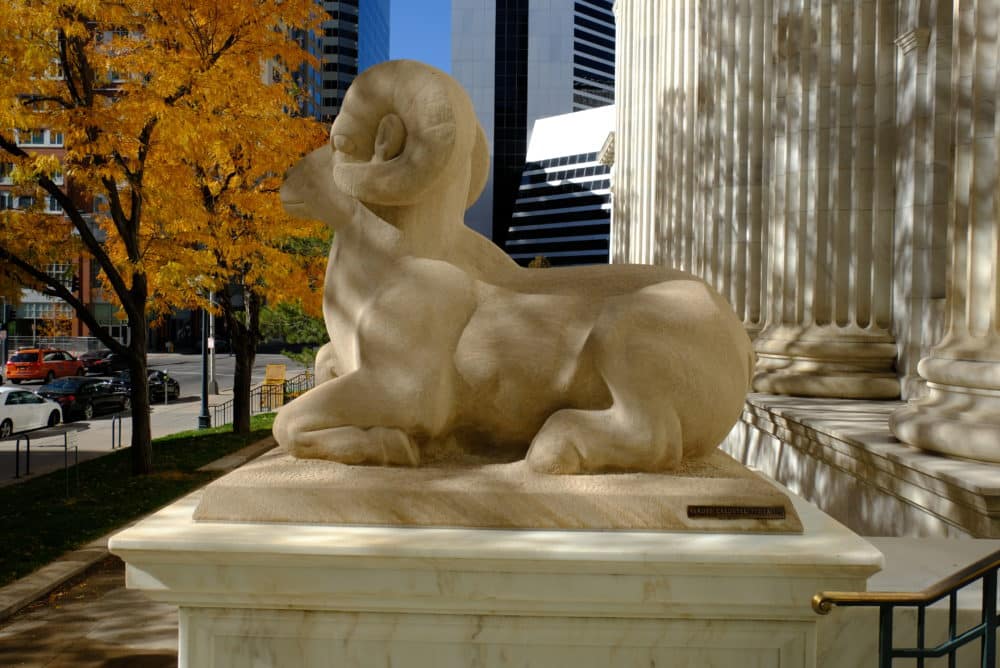
Marcin Pikus of McKay Lodge Conservation Lab recently performed a limestone sculpture conservation treatment in Denver, Colorado of two Indiana limestone sculptures. The sculptures depict two Rocky Mountain Rams carved in 1936 by local sculptor Gladys Caldwell Fisher, and they have continued to flank the entrance of the Bryon White U.S. Courthouse since that time. The artwork was made possible with funds provided by the Treasure Relief Art Project.
The Courthouse is a 244,000 square foot, four story structure clad in white Colorado Yule marble executed in the Neoclassical style. The bold, muscular forms of the sheep seem to perfectly match the austere design of the architectural elements of the building.
Caldwell Fisher (1907-1952) was born in Loveland, Colorado and based in Denver most of her life. As a young woman she studied art, and eventually received scholarship to continue her studies in both New York and in Paris. While abroad Caldwell Fisher learned under sculptors Aristide Maillol, George Hilbert, and Jose de Creeft. She returned to Colorado to continue her artwork and taught at Denver University and the Denver Art Museum. It was during this time she won the commission for the stone sculptures at the Bryon White U.S. Courthouse.

The limestone sculptures were in good structural condition; however, the stone surfaces had areas of visible layers of black gypsum crust and bio-film. The darkened surface is not unusual for sculptures exposed to an urban environment, but conservation treatment was required to avoid damage to the stone and improve the appearance.
When it comes to removing pollution crust and mineral deposits from delicate limestone, one certainly cannot be “sheepish” in their approach. Stone Conservator Marcin Pikus and conservation assistant Curtis McCartney , both of whom have experience in treating limestone and sandstone, first reduced the black crust with a dilute basic solution and poultice, gradually dissolving the layers over the course of several hours.

The remaining black crust was removed with gentle scrubbing, then the debris was rinsed from the surface. Both sculptures were then thoroughly cleaned with a hot pressure washer, followed by the application of an environmentally safe anti-fungal treatment. The sculptures received one final rinse with the hot pressure washer, creating an even tone on each of the sculptures.
The after treatment image allows a viewer to read the form of the carved stone now that the layers of dirt and pollution have been removed. The limestone sculpture conservation treatment made a big improvement.

